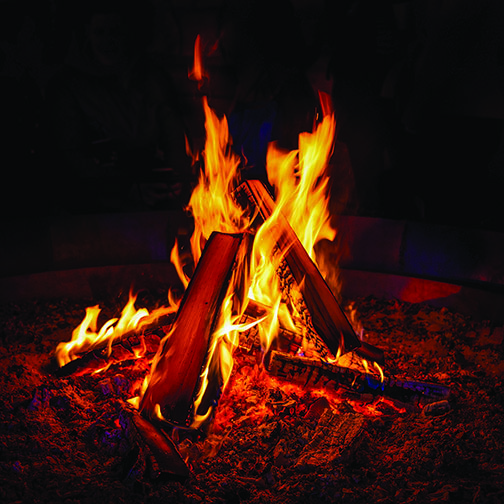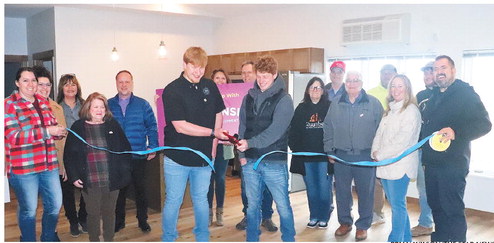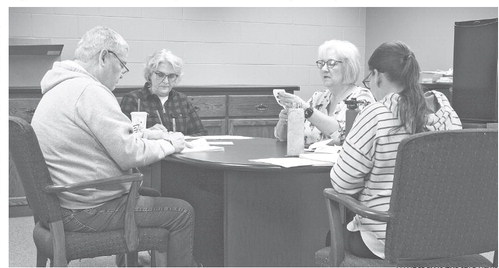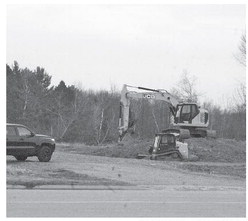Make the right choice when it comes to campfire wood


To protect Wisconsin’s trees, obtain firewood near where it will be used, or use certified firewood that has been properly heat-treated or aged to kill any infesting pests or diseases.
Firewood can transport harmful tree problems to a backyard, street or favorite campsite. Just one firewood log can easily hide insects, such as emerald ash borer or spongy moth, or the tiny spores of a treekilling fungal disease, such as oak wilt.
Instead of taking firewood along on the next camping trip or bringing some home from far away, get firewood from the area it will be used. Make sure it is from trees harvested nearby, or buy firewood that has been processed to eliminate pests and diseases.
Wisconsin regulates the movement of firewood in the state, to help protect trees and forests. Property owners and managers may also have additional restrictions.
The quarantine for the spongy moth prohibits the movement of firewood east to west, from infested to non-quarantined Wisconsin counties. If moving firewood to, or through, tribal properties, contact the tribe for its policy on allowable firewood.
County, federal and private campgrounds may have their own firewood restrictions. Call ahead or look online for specific information, including whether firewood is available at the campground.
To prevent the spread of emerald ash borer, and other invasive insects and diseases moving in firewood, the DNR developed a permanent rule, which prohibits visitors from bringing firewood into Wisconsin state parks and other state-managed lands, from locations farther than 10 miles away from the property. Treated, pestfree wood from state certified vendors is exempted from this regulation.
To help with trip planning, each state campground has a map, showing the 10-mile radius. Firewood can be purchased in, or near, almost every Wisconsin state park or forest property. In unstaffed campgrounds or remote campsites, firewood may be found available locally – either for sale in nearby communities or on the property, as dead and downed wood.
Firewood that has been certified by the Wisconsin Department of Agriculture, Trade and Consumer Protection (DATCP), has been processed to kill potential pests and diseases hiding inside. It is legal to move this wood around the state, regardless of quarantines and it may be brought to state parks, forests and other DNR campsites, regardless of where it was obtained. Wisconsin certified firewood has this seal on its label.
Tribes and non-DNR campgrounds may, or may not, allow certified firewood. Dimensional lumber (such as 2x4 or 4x6 scraps from a building project) without paint or preservatives, will be allowed on state property at the discretion of park staff.
Full or partial pallets, skids or slabs are not allowed. This wood may be fresh enough to harbor pests and has traveled long distances.
Wood that is painted, treated with preservatives, or made up of a composite of wood and glue, such as chipboard and plywood, are also not allowed. Toxins are released when this wood is burned, causing a serious health hazard.
Most parks have a Friends Group that sells quality firewood. Proceeds help to pay for educational programs, buildings, picnic shelters, needed equipment and other park projects. In addition, individuals or businesses usually have firewood available for sale close to the park.
Use up the firewood at each place on the camping vacation. Do not take it to another destination.
When buying firewood, make sure the pieces are dry, and have either no bark or bark that is loose (a sign that the wood is very dry). This will reduce the threat of spreading diseases and the fire will be easier to start.
Reduce the need for open fire, by cooking over gas or charcoal. Instead of an evening campfire, explore new night-time activities, such as star-gazing or viewing wildlife by flashlight.
If camping from outside of Wisconsin, do not bring firewood along. If it originated from more than 10 miles from the state campground and isn’t certified, it will have to be surrendered before checking into the campsite.




